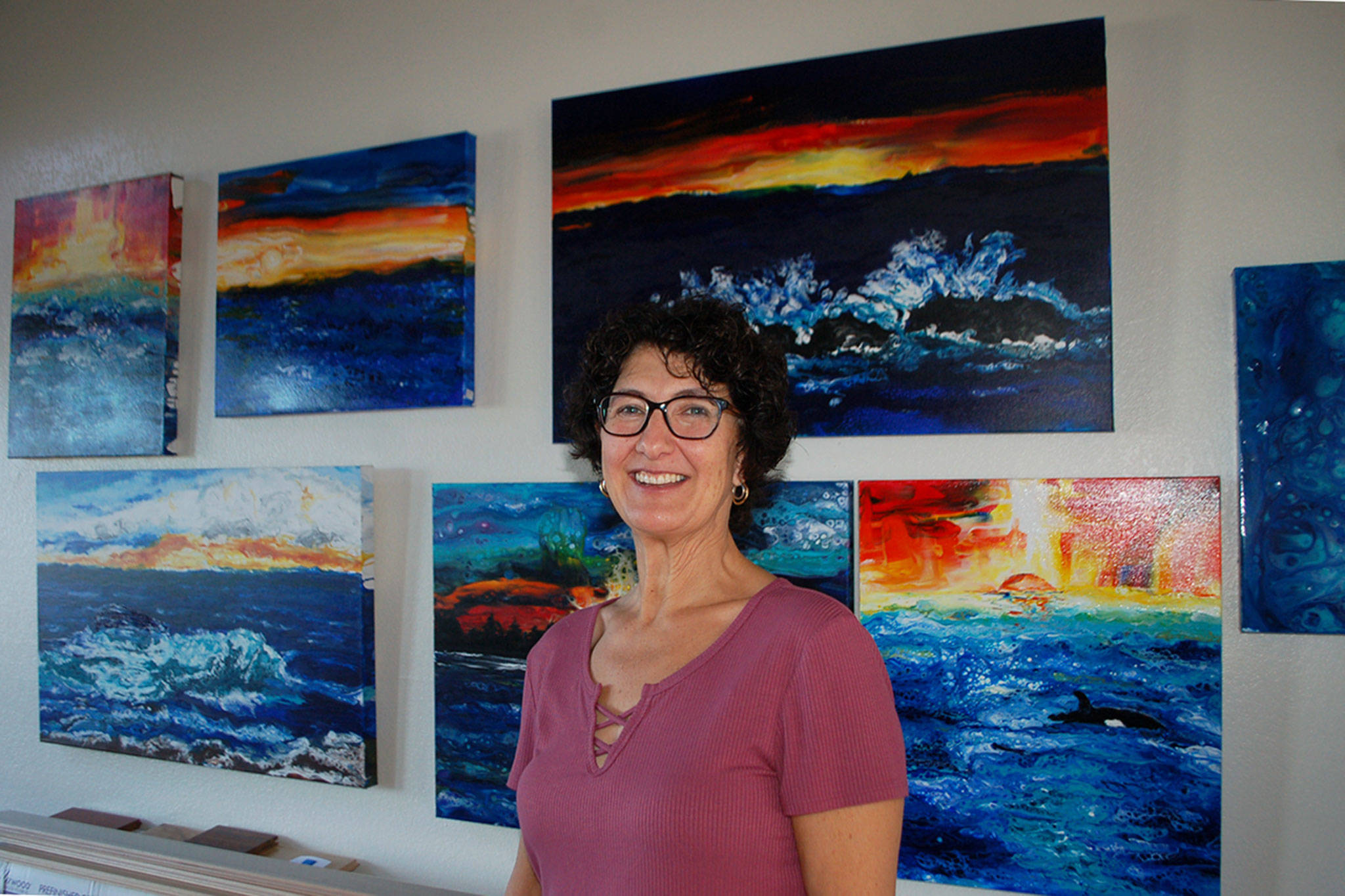Melanie Burns’ style of art involves a little acrylic paint, a dash of chemical reactions and her favorite: a lot of color.
“I’ve always loved color,” she said.
Burns is a self-taught artist that has been creating since she was a youth. She started working with stained glass when she was a teen, then switched to mosaics, oils and her newest medium, acrylic pouring.
“I love the way the colors flow together,” she said. “This method gets colors to mix and blend in a unique way.”
Burns is one of the featured artists at the Blue Whole Gallery for the month of November where her work will remain in the window and on display from Nov. 1 through the end of the month.
While her acrylic pouring pieces are abstract, the vibrant scenes she creates depict some of her favorite memories of spending time on the water in Alaska. A commercial fisher, she lived in a remote area of Alaska where she was often immersed in nature.
Many of the scenes in her artwork include sunsets, ocean scenes, and some of her favorite marine animals such as whales.
“The power of the ocean is so incredible,” Burns said.
The pouring process
Burns tried acrylic pouring after watching YouTube videos and has loved the medium ever since. With this particular art form, she feels like she can bring out beautiful hues with chemical reactions.
She had a hiatus from art for about 10 years, Burns said, because “life happened” and she wanted to start creating again, which is when she learned pouring in January.
“I decided I needed to do it,” she said.
When she pours, Burns starts by choosing colors she wants to work, then creates a pour mixture using acrylic paint and chemicals, such as a few drops of silicone, that helps the paint move and flow when she pours it onto her canvas.
There are visible bubble-like elements in her paintings, which she calls “cells” that are formed during the chemical reactions in her paint mixture. This is what makes the medium so different in addition to the way the paint blends.
The paint dries fast because it is acrylic, she said, giving her a one-to two-hour window to create the image she wants.
After she pours the paint, Burns “babysits” the piece by moving and pulling the paint around using a spatula, twine, a straw and other devices to create the scene she wants.
Sometimes she goes back into a painting to add finer details, such as when she incorporates a sea creature into her painting.
Burns says the way a piece looks when she first starts always looks different when she’s finished because the paint is constantly moving on the canvas due to chemical reactions.
“It’s fun to see what I see and then see what others see,” Burns said.
When asked why she enjoys creating artwork, she said, “I just have to.”
Her art will be on exhibit at the Blue Whole Gallery, at 129 W. Washington St., from Nov. 1-Dec. 1 and also at Coldwell Banker, at 243 Taylor St., Port Townsend, for the month of January.
Burns does commission pieces and charges depending on the size of the piece. Her artwork also is sold through the Blue Whole Gallery while its on exhibit.
For more information about Melanie Burns, visit her website at www.melsmosaics.com or call her at 907-500-2134.


